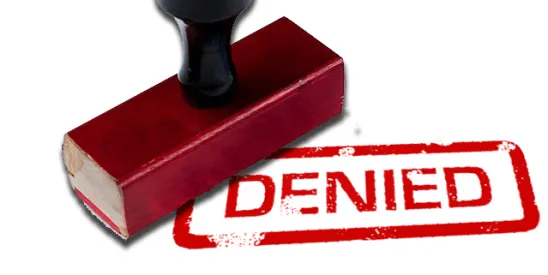In In re Vivint, Inc., 2021 U.S. App. LEXIS 29400, __ F.4th __ (Fed. Cir. Sept. 29, 2021), the Federal Circuit vacated the Patent Trial and Appeal Board (“PTAB”) decision rejecting all reexamined claims of U.S. Patent No. 6,717,513 (“the ’513 patent”) and remanded with instructions to dismiss the reexamination under 37 C.F.R. § 1.181 based on § 325(d).
Background
Vivint sued Alarm.com for infringement of the ’513 patent and three other patents. Alarm.com then filed three petitions for inter partes review (“IPR”) of the ’513 patent: IPR2015-01997, IPR2016-00129, and IPR2016-01091.[1] All petitions were denied; ‑01997 and ‑00129 under 35 U.S.C. § 314(a) for failing to meet the threshold of showing a reasonable likelihood of prevailing on at least one challenged claim, and ‑01091 (“the ’091 petition) under 35 U.S.C. § 325(d) because it involved “undesirable, incremental petitioning” and Alarm.com had “used prior Board decisions as a roadmap to correct past deficiencies.” Id. at *3. According to the PTAB, “allowing similar, serial challenges to the same patent, by the same petitioner, risks harassment of patent owners and frustration of Congress’s intent in enacting the Leahy-Smith America Invents Act.” Id.
Following these denials, Alarm.com requested ex parte reexamination of all claims of the ’513 patent, presenting four questions of patentability relying in part on two references asserted in the ’091 petition and largely repeating the arguments from the ’091 petition. Id. at *4. The Patent Office ordered reexamination, finding Alarm.com had raised substantial new questions of patentability. Id.
Vivint responded by seeking dismissal of the reexamination under 37 C.F.R. § 1.181, arguing that “each factor the Patent Office uses when exercising its discretion under 35 U.S.C. § 325(d) counseled in favor of dismissal.” Id. at *5. Section 325(d) permits the Director to consider whether, and reject the petition or request because, the same or substantially the same prior art or arguments previously were presented to the Office. Section 325(d) reads:
(d) MULTIPLE PROCEEDINGS. — Notwithstanding sections 135(a), 251, and 252, and chapter 30, during the pendency of any post-grant review under this chapter, if another proceeding or matter involving the patent is before the Office, the Director may determine the manner in which the post-grant review or other proceeding or matter may proceed, including providing for the stay, transfer, consolidation, or termination of any such matter or proceeding. In determining whether to institute or order a proceeding under this chapter [POST-GRANT REVIEW], chapter 30 [PRIOR ART CITATIONS TO OFFICE AND EX PARTE REEXAMINATION OF PATENTS], or chapter 31 [INTER PARTES REVIEW], the Director may take into account whether, and reject the petition or request because, the same or substantially the same prior art or arguments previously were presented to the Office.
The Patent Office dismissed Vivint’s Rule 181 petition because it was filed after reexamination was ordered. Id. at *5. Vivint requested reconsideration but that too was denied, in part due to the timing of Vivint’s petition. Id. at *7.
Eventually, the examiner rejected the claims in the reexamination and the PTAB affirmed. Id. Vivint appealed, arguing that “because the ex parte reexamination request repackaged arguments in the ’091 petition, it did not present a new question of patentability.” Id. at *8 (emphasis in original). Vivint argued that denials of IPR should be considered “an earlier concluded examination or review” as set out in MPEP § 2242(I): “a substantial new question of patentability as to the claim is present, unless the same question of patentability has already been: … (B) decided in an earlier concluded examination or review of the patent by the Office[.]” Id. at *10-11.
Federal Circuit Decision
35 U.S.C. § 303(a) provides that the Director will determine whether a substantial new question of patentability is raised in a request for reexamination within three months following the request. The Federal Circuit found that the statutory language of 35 U.S.C. § 303(a) provided little guidance on the standard for “substantial new question of patentability,” although the statute does say that “[t]he existence of a substantial new question of patentability is not precluded by the fact that a patent or printed publication was previously cited by or to the Office or considered by the Office.” 35 U.S.C. § 303(a).
Section 325(d), however, provides that the “Patent Office has discretion to deny an ex parte reexamination request that raises an argument that has been previously presented to it[.]” Id. at *9 (emphasis in original). The Federal Circuit interpreted this language to mean that “a question of patentability is new until it has been considered and decided on the merits.” Id. (emphasis added). Id. The Federal Circuit did not find Vivint’s MPEP argument changed that interpretation, even assuming the correctness of Vivint’s characterization of an IPR denial as “an earlier concluded examination or review.” Id. at *11.
According to the Federal Circuit, each of Alarm.com’s four questions of patentability in the reexamination request was new under § 303(a) because the USPTO did not consider any of them on the merits during its consideration of whether to institute IPR. Id. Two of the questions were not raised in the IPR petitions at all and two included a reference not asserted in the IPR petitions. Id. at *11-12. Perhaps more importantly, because the PTAB’s denial was based on its exercise of discretion in view of Alarm.com’s serial petition filing, the Federal Circuit concluded that the Patent Office never considered or decided the merits of the patentability arguments raised in the IPR petition. Id. at *12.
However, the Court held that even if the ex parte reexamination request presented a substantial new question of patentability, “the Patent Office abused its discretion and acted arbitrarily and capriciously by ordering reexamination, and thereafter, refusing to terminate that proceeding.” Id. at *13.
According to the Court, after the ’091 petition was denied, “it was arbitrary and capricious for the Patent Office to order reexamination over § 325(d), or, at minimum, refuse to terminate reexamination once Vivint requested it to do so.” Id. at *14. The USPTO should not have denied Vivint’s Rule 181 petitions because it “has authority to reconsider its decision ordering ex parte reexamination based on § 325(d).” Id. at *15. Instead, “the Patent Office … relied on its erroneous legal conclusion: ‘that once the [ex parte reexamination] order has issued, the Office is required by statute to conduct reexamination.’” Id. at *17.
The Federal Circuit emphasized Alarm.com’s abusive filing practices, based in part on its filing of a nearly identical request for ex parte reexamination after the ’091 petition—itself a serial petition—was denied:
Rather than learn its lesson, however, Alarm.com continued to engage in abusive filing practices after the ’091 Decision. It copied, word-for-word, two grounds from the ’091 petition—the very petition deemed “a case of undesirable, incremental petitioning”—into its ex parte reexamination request. And for the portions it did not copy, Alarm.com “used prior Board decisions as a roadmap to correct past deficiencies.” ’091 Decision at 12. Indeed, the ex parte reexamination request was a more egregious abuse than the ’091 petition under the same considerations already analyzed by the Board. The ’091 petition was the third filing in a string of “undesirable, incremental petitioning” practices. Id. And Alarm.com’s ex parte reexamination request was another, fourth iteration of Alarm.com’s abuse of process.
Id. at *19-20.
The Federal Circuit remanded the case to the PTAB with instructions to dismiss Id. at 23. In this case, “[i]t would be arbitrary and capricious for the Patent Office to do anything on remand other than terminate the reexamination.” Id. at *17. The Federal Circuit emphasized:
Section 325(d) applies to both IPR petitions and requests for ex parte reexamination. Thus, the Patent Office, when applying § 325(d), cannot deny institution of IPR based on abusive filing practices then grant a nearly identical reexamination request that is even more abusive. We see no difference between the IPR and ex parte reexamination processes that would justify such conduct and nothing short of termination of the reexamination would be appropriate.
Id. at *20-21.
The Federal Circuit also noted that its ruling was “limited” and that there may be circumstances under which the USPTO may order an ex parte reexamination despite an earlier petition for inter partes or post grant review. Id. at *22-23.
Take-aways
Requesting ex parte reexamination is, of course, an option for those looking to challenge patent claims. But when considering that option, challengers may want to take into account the timing of that request along with or separate from an IPR or PGR petition and in the context of any pending litigation.
In addition to 35 U.S.C. § 325(d), the increase in discretionary denials under Fintiv seems to be paving the way for a deeper consideration of ex parte reexaminations. Patent Office data reflects an increase in ex parte reexamination requests in 2020 from 2019 (167 in 2019 and 193 in 2020).[2]
For petitioners seeking to maximize their chances of getting an ex parte reexamination ordered after one or more IPR or PGR petitions are filed, consider (1) filing the reexamination request before there is a final written decision (FWD) in the IPR/PGR, (2) finding new prior art that was not raised in the IPR/PGR, and (3) proactively distinguishing any potential § 325(d) positions in the request.
Patent owners facing an ex parte reexamination request may want to compare the cited prior art to that relied upon in any IPR/PGR petitions and point out any similarities to references already considered by the USPTO or PTAB.
[1]Alarm.com also filed 11 petitions for IPR against the 3 other patents in litigation.
[2]Read more here.






 />i
/>i
